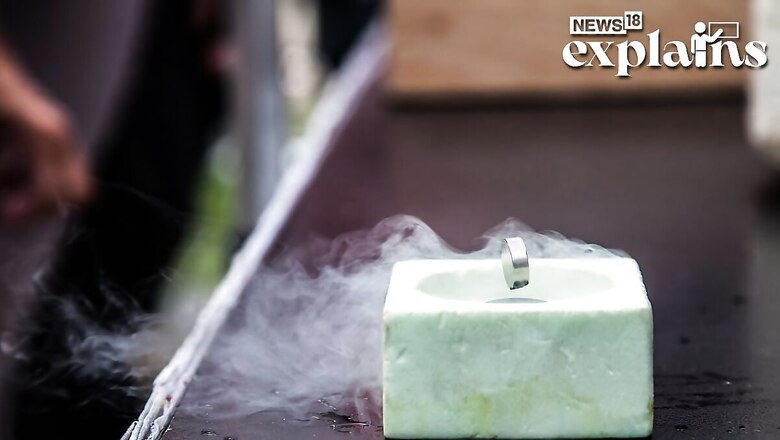
views
A group of South Korean scientists claimed to have developed a superconductor at room temperature and pressure. The research team published two papers claiming to have discovered the “world’s first room-temperature superconducting material.”
The superconducting material named LK-99 is a mix of powdered compounds of lead, oxygen, sulphur and phosphorus.
If the claims are found true and can be replicated in other labs, then it could be a monumental discovery because it has been impossible so far to develop a superconductor at room temperature and ambient pressure.
What is LK-99?
LK-99 is a mix of powdered compounds of lead, oxygen, sulphur and phosphorus. When it is heated at very high temperatures, it forms a dark grey solid.
According to the new research, the material exhibits some of the common characteristics of superconductors, such as zero resistivity, critical current, and a critical magnetic field.
First claimed successful replication of LK-99Accomplished by a team at the Huazhong University of Science and Technology and posted 30 minutes ago.
Why this is evidence:The LK-99 flake slightly levitates for both orientations of the magnetic field, meaning it is not simply a… pic.twitter.com/bh0x9oqaz2
— Andrew Cote (@Andercot) August 1, 2023
The team of scientists comprising Sukbae Lee, Ji-Hoon Kim and Young-Wan Kwon, along with Hyun Tak Kim, claimed to have created the superconductor, which could work at temperatures as high as 127 Degrees Celsius.
The discovery holds importance because scientists have traditionally believed that they can’t have a superconductor at more than -240 degrees Celsius.
Superconductors explained
Superconducting materials have been an area of interest for the scientific research over the past century. It was first discovered by Dutch physicist Heike Kamenlingh Onnes in 1911.
Superconductivity is a phenomenon where the electrical resistance of a material vanishes. In simple terms, every material has resistivity or how strongly it resists electric current. While metals like silver and copper have low resistance, others like iron, graphite or insulators like rubber or plastic have high resistance.
Imagine what we could build using a superconductor like LK-99. pic.twitter.com/BlAS6hMSwJ— Paul Bohm (@paulbohm) August 1, 2023
But a superconductor can convey an electrical current without any resistance and expels a field of magnetic flux, termed the Meissner effect.
Scientists have been able to reproduce the superconductivity, but it requires extreme physical conditions, like extremely low temperature like -268 degrees Celsius or very high pressure.
Elemental metals like lead, mercury, niobium, tin and their alloys can become superconductors when chilled to near absolute zero, according to Science.
However, the recent scientific discovery has made waves due to its unique property of superconducting at ambient temperatures.
How Could Superconductors Benefit?
A room-temperature superconductor could open the door to a new era of scientific innovation. The discoverty will not only cut down electricity transmission costs but also unleash new possibilities in computing, nuclear fusion and energy storage.
Superconducting materials have been used to speed up connections between computer chips and superconducting coils are used in some of the magnetic resonance imaging (MRI) machines used by doctors to examine soft tissue inside patients.
If the superconducting materials are available at room temperature, the long-distance power lines could be made of the material enabling long-distance lossless power transmission.
The room temperature superconductivity will also provide breakthrough in areas including superconducting magnets, superconducting cables, and superconducting maglev trains, according to reports.
Concerns Regarding the Discovery
Scientists have said that it is too early to conclude the superconductivity in the materials. They claim that some of the data related to LK-99’s magnetic properties in the two research papers likely have some technical errors.
The team has also faced skepticism due to the insufficient experimental data to prove LK-99 is a superconductor.
Susannah Speller, professor at the University of Oxford, stated, “So it is too early to say that we have been presented with compelling evidence for superconductivity in these samples.”
According to a report in The Hindu, the CSIR-National Physical Laboratory in New Delhi attempted to replicate the findings in the paper and failed.
However, a Chinese experimental team led by Chang Haixin, a professor at the School of Materials Science and Technology of Huazhong University of Science and Technology, released a video on social media saying that they successfully verified the synthesis of LK-99 crystal.




















Comments
0 comment